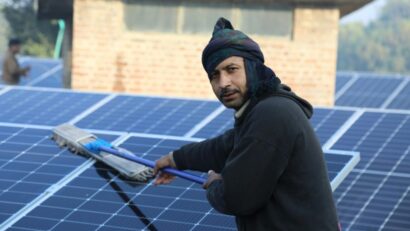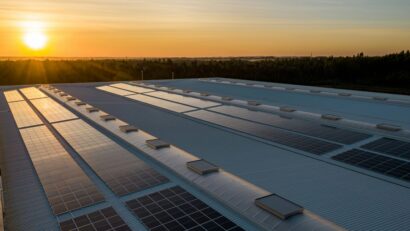
Solar Energy Instead of Power Outages in Pakistan: How the Population is Driving the Countries Energy Transition
In a world increasingly impacted by climate change and rising energy costs, Pakistan emerges as a surprising example of an impressive energy transition. The use of solar energy is booming—not driven by large corporations, but by the people themselves. Motivated by rising electricity prices and the need for a stable energy supply, more and more households and small businesses are turning to solar power. Through initiative and ingenuity, Pakistanis are creating their own energy solutions.
Electricity prices in Pakistan have skyrocketed in recent years, placing an almost unbearable burden on many families. Since 2021, rates have increased by more than 155%. Simultaneously, the power supply remains unreliable. Frequent power outages, known as “load shedding,” are implemented to ease the grid’s burden and have become a daily reality for many. Especially during the scorching summer months, when temperatures soar above 40°C and fans and air conditioning are essential, this situation can become life-threatening for some.
Rising Electricity Prices Force Pakistanis to Act
The combination of rising prices and an unstable supply has triggered a solar energy boom among Pakistanis. Increasingly, people are installing solar panels on their rooftops to reduce their dependence on the national grid. In urban areas like Karachi and Lahore, solar panels are now a common sight. The hope for stable and long-term affordable energy drives this growing trend.
Pakistanis are taking responsibility for solar energy generation. Photo: Jamshaid Anwar / Pexels
Solar Energy Becomes Affordable in Pakistan
What fuels the solar boom is the decreasing cost of solar technology. Particularly, China’s overproduction of solar panels has led to significantly reduced costs. For many Pakistani families who previously had no choice but to endure high electricity bills, investing in solar installations has become feasible.
A basic system, consisting of solar panels and a battery, is often sufficient to supply a household with essential power. Lights, fans, and small appliances can operate independently of the public grid. The rapid spread of this technology has also created new economic opportunities: local businesses specializing in the installation and maintenance of solar systems are flourishing. In rural areas, the market for solar technology is generating numerous new jobs.
Solar Power generated energy has drastically increased in recent years in Pakistan. Source: U.S. Energy Information Administration
Solar Energy for Agriculture in Pakistan
In Pakistan’s rural areas, solar energy has proven crucial for agriculture. Solar panels power water pumps needed for irrigating fields. In a country frequently plagued by droughts, this means not only higher yields but also greater security for farmers. Without solar power, many would still rely on expensive and environmentally harmful diesel generators for irrigation.
The long-term benefits are clear: In addition to reducing energy costs, the environmental footprint improves. Especially in an era when the climate crisis makes weather patterns increasingly unpredictable, solar energy offers a sustainable alternative.
The Downsides of Pakistan’s Solar Energy Boom
Despite all the progress, there are significant challenges. The rapid adoption of private solar installations is creating problems for the national power grid. It was never designed to handle decentralized energy production. As many households now generate their own electricity, demand for grid power is decreasing, pushing state-run utilities into financial distress. Simultaneously, the outdated grid cannot absorb surplus electricity produced by solar systems.
Another issue is the unregulated market. With the solar technology boom, many vendors have entered the market, not all offering high-quality products. Cheap solar panels and batteries often lose efficiency quickly, posing financial risks to users. Without clear standards or regulations, consumers are often stuck with substandard systems, which could harm trust in the technology over time.
What Is the Pakistani Government Doing for Solar Energy?
The Pakistani government has acknowledged that solar energy is a key to the country’s future. Initial initiatives aim to promote the expansion of renewable energy. The Quaid-e-Azam Solar Park in Punjab, one of the largest in the world, exemplifies government support for large-scale projects. The government has also set a goal: By 2030, 30% of Pakistan’s energy should come from renewable sources.
However, these measures are insufficient to address current challenges. Critical investments in modernizing the power grid remain absent. Subsidies or low-interest loans to help low-income households access solar technology exist only sporadically. The government urgently needs to take action to establish the infrastructure necessary to sustain the solar boom.
This work is licensed under the Creative Common License. It can be republished for free, either translated or in the original language. In both cases, please cite Kontrast / Justus Hartmann as the original source/author and set a link to this article on TheBetter.news. https://thebetter.news/solar-energy-pakistan/
The rights to the content remain with the original publisher. Läs mer…








